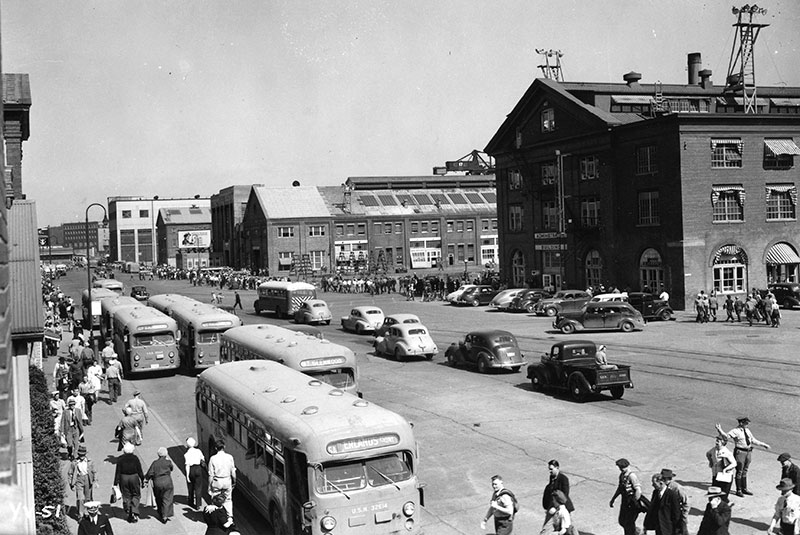In World War II, industry boomed and our population skyrocketed. Washington State played a role in every aspect of the conflict—from the production of B-17 bombers to the processing of fruits and vegetables.
 Farragut Avenue in Bremerton. Roughly 300 people arrived per day in July 1943 to work at the Puget Sound Naval Shipyard, Puget Sound Navy Museum
Farragut Avenue in Bremerton. Roughly 300 people arrived per day in July 1943 to work at the Puget Sound Naval Shipyard, Puget Sound Navy Museum
- Seattle’s aircraft industry was awarded $1 billion in war-time contracts by the summer of 1942.
- The city was awarded more than $700 million in shipbuilding contracts.
- Washington, an agricultural state, processed and dehydrated fruit, vegetables, milk and eggs to send overseas. The state saw strong harvests despite labor shortages brought on by the war.
- Washington was home to major military bases and the Hanford Nuclear Reservation—where plutonium was produced for the bomb that brought an end to World War II.
- The population of our state increased by more than 10 percent from 1930 to 1940, and by more than 35 percent from 1940 to 1950.
Population Totals
- 1930 — 1,563,396
- 1940 — 1,736,191
- 1950 — 2,378,963
"War Production in Washington" published by Secretary of State Belle Reeves, 1943. Courtesy Washington State Library